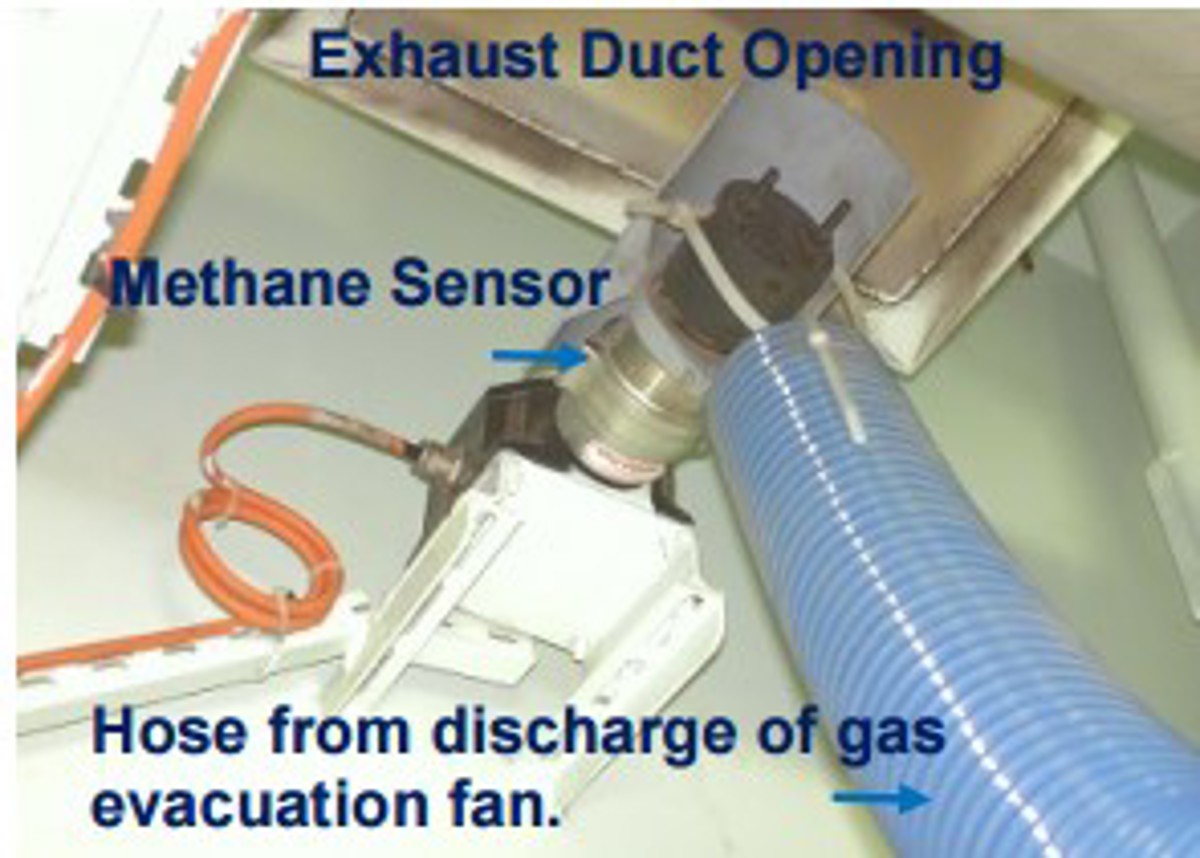Dangerous modifications found within a gas valve unit room
- Safety Flash
- Published on 25 May 2017
- Generated on 5 July 2025
- IMCA SF 12/17
- 3 minute read
Jump to:
The USCG has issued Safety Alert 05-17 to warn of a potentially dangerous situation involving modifications within a gas valve unit (GVU) room aboard a liquefied natural gas (LNG) carrier.
Don’t allow corrective actions to create additional hazardous conditions!
The GVU room is located within the machinery space of the dual fuel, diesel-electric propelled vessel. These engines can burn petroleum oil or LNG in gaseous form. The GVU is a multi-component device which manages the liquefied natural gas pressure supplied to the propulsion engines.
The GVU room has an air intake and exhaust system designed to continuously ventilate and exchange the air within the space to reduce fire, explosion, and hazardous atmosphere risks from developing if gas leaks should occur from the equipment. The atmosphere of the room is monitored by a catalytic methane sensor located near the inlet to the room’s ventilation exhaust trunk.
The GVU room’s ventilation creates a vacuum within the room when the two access doors are shut.

During a repair on one cylinder of a main engine vessel, engineers had to remove an expansion bellows. Upon replacement of the bellows an O-ring, separating its inner and outer sections, was damaged. This error went unnoticed until a crew member was making a round in the enclosed GVU room while the engine had been operating on gas. After entering the GVU room he was overcome by methane gas and nearly lost consciousness. Fortunately, he was able to exit the space into a safe atmosphere. After the incident, the GVU room atmosphere was measured to be 22 percent methane and 17 percent oxygen by volume. Methane is an asphyxiant which displaces oxygen and is extremely flammable. The installed methane sensor failed to detect the accumulation of gas despite not having malfunctioned.
Engineers had rigged a hose from the outlet of the gas evacuation fan, across the GVU room to the sensor at the entrance exhaust duct. This unauthorised arrangement, which was identified during a Coast Guard examination, could have likely disabled the sensor’s ability to detect methane leakages from other components within the GVU room.
Lessons learned
The US Coast Guard strongly recommends to Flag States, classification societies, underwriters and insurers that respective examiners, surveyors, and inspection personnel maintain an acute awareness regarding any system modifications, whether deemed potentially hazardous or not, to ensure such modifications have received the proper engineering reviews, approvals, and supporting documentation.
The full USCG Safety Alert 05/17 can be found on the USCG website.
IMCA Safety Flashes summarise key safety matters and incidents, allowing lessons to be more easily learnt for the benefit of the entire offshore industry.
The effectiveness of the IMCA Safety Flash system depends on the industry sharing information and so avoiding repeat incidents. Incidents are classified according to IOGP's Life Saving Rules.
All information is anonymised or sanitised, as appropriate, and warnings for graphic content included where possible.
IMCA makes every effort to ensure both the accuracy and reliability of the information shared, but is not be liable for any guidance and/or recommendation and/or statement herein contained.
The information contained in this document does not fulfil or replace any individual's or Member's legal, regulatory or other duties or obligations in respect of their operations. Individuals and Members remain solely responsible for the safe, lawful and proper conduct of their operations.
Share your safety incidents with IMCA online. Sign-up to receive Safety Flashes straight to your email.